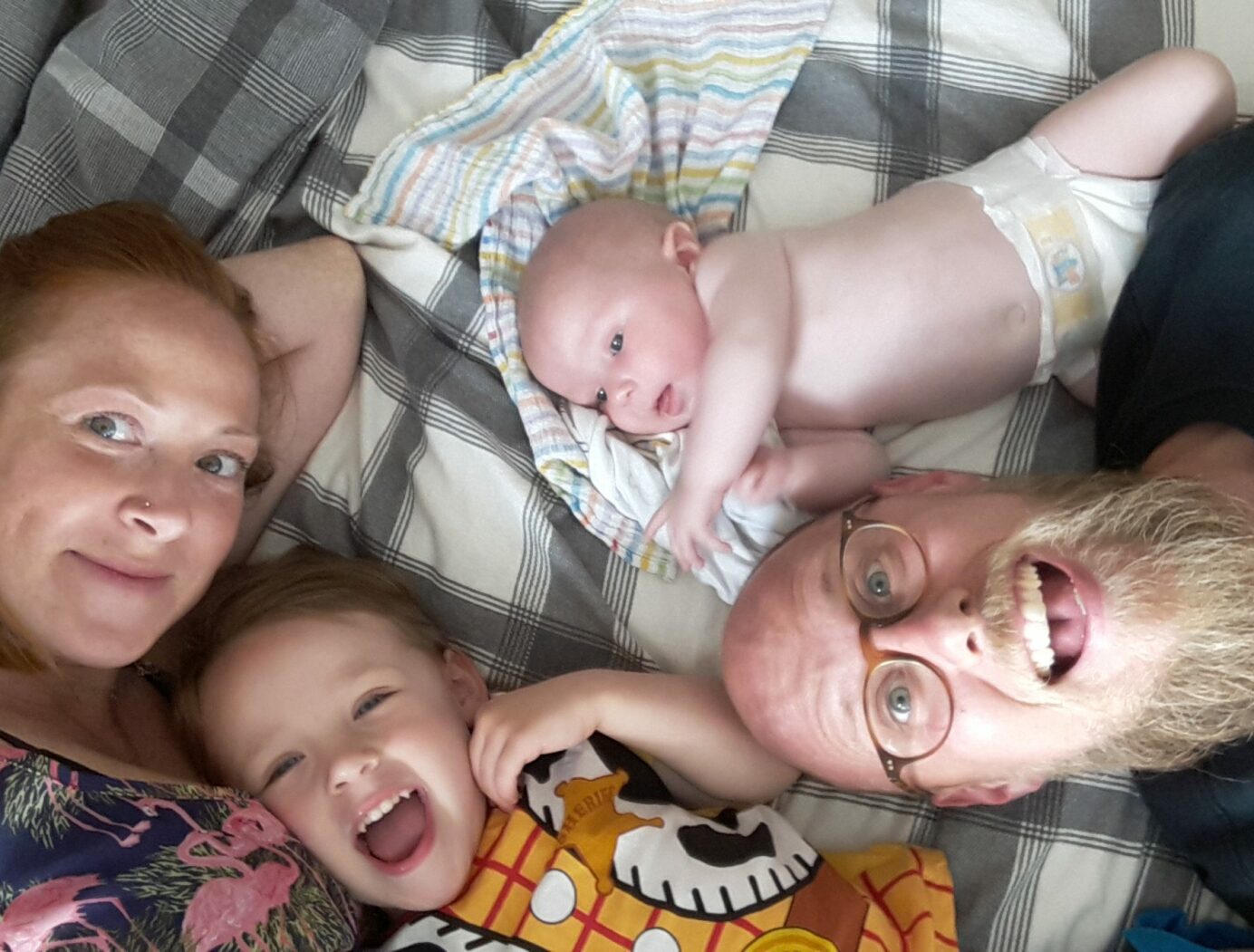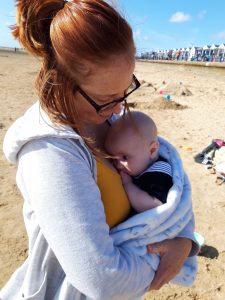
Paying it forward after a devastating diagnosis: Claire’s story
August 06, 2020
“If we can let someone else benefit from what we’ve been through, then that’s great. It’s really high up in our list of what’s important.”
When Claire Gardner and her family walked through the doors of Ronald McDonald House Manchester, at the beginning of 2019, it was her son Jude’s third stay in a paediatric intensive care unit.
From when Jude was just eight weeks old, Claire, her husband Phil and their daughter Mathilde had been in and out of hospital with him. Jude was a fighter from the beginning, Claire said; happy and resilient despite multiple health issues, a lack of muscle tone, mobility and struggles with feeding.
“We knew something wasn’t quite right, but each test he was having came back clear – blood tests, urine tests, all of it,” Claire said.
Jude had a stint in hospital, during which he was fed through a tube to help him gain weight. During this period he had a seizure, so was put on medication.

Looking back, Claire said there were signs of what Jude was eventually diagnosed with.
“But at the time, it was just all of these little contributing factors. We were told from the very beginning that he was like a jigsaw, and we were trying to figure out all of the pieces and work out what was going on.”
When it came to Jude’s development, Claire said nothing was straight forward. She and Phil took Jude to speech and language therapists, neurologists were brought in to assess what may have caused his seizure, and he underwent tests to make sure his internal organs were all leading where they should.
Mathilde was about three when Jude was born. As Jude was her only younger brother, she seemed to assume this was business as usual, Claire said, and took everything in her stride. The family developed a routine, of sorts; Phil would look after Mathilde at home while Claire stayed with Jude in hospital.
Last October Jude was admitted into Alder Hay Children’s Hospital, in Liverpool, where he stayed for several days.
While he was released fairly quickly, his health began to rapidly decline again less than a week later. He was admitted into their local Manchester Hospital, and put on a ventilator.
“They were running test after test and again, everything was coming back clear. His bloods were clear, and then he had another MRI scan, which unfortunately showed that his brain had shrunk.”
“On the 28th of November, we were told that whatever it was that he had was degenerative, and he wasn’t coming home after hospital.”
Claire said the news was devastating.

Just twelve days before Jude passed away, earlier this year on January 1st, the genetics team in Manchester Hospital pulled Claire and Phil aside to tell them that they had discovered what Jude had; Rett syndrome.
Despite all the testing, along with the research Claire and Phil had done themselves, Claire said Rett syndrome had never been discussed. The genetic disorder almost exclusively affects females, due to males having a different chromosome combination.
“Boys only have one X and one Y chromosome, so if they have this defect on their X chromosome, they basically don’t even make it through the pregnancy,” Claire said.
“It’s unbelievable that we even managed to have him for as long as we did.”
Having been delivered the news that Jude wasn’t going to make it, Claire and Phil resolved to make the most of their time with him and “deal with the rest of it afterwards”.
While it was only a sliver of a silver lining, Claire said it was a blessing in disguise that Jude’s diagnosis came so late in the day. Not knowing let her and Phil treasure the time they had with Jude, without living with the grief that came with an expiry date.
Claire said she would have struggled without Ronald McDonald House Manchester over this period. The House was a place of respite for the family, particularly Mathilde, who loved the distraction of the playrooms.
“It was a massive comfort knowing that I was so close to Jude. I don’t think that I could have slept, had I had to go home every night, away from him.”
Following Jude’s death, Claire said she and Phil had known they wanted to help other people where they could.

Claire was in touch with people living with Rett syndrome, as well as a few parents whose children have died from the disorder. She described this as mutually beneficial; it helped her to understand more about the condition and hoped it would help others whose life had been affected by a diagnosis.
She and Phil thought about varying types of donations and eventually decided to set up a Just Giving page. Initially, they set up a modest target of £500.
This has since climbed up to reach more than £7,000, an incredible amount that the family has split between three charities; RMHC UK, Rett UK, and Reverse Rett.
Claire wanted the money to go towards whatever would help RMHC UK to help more families, in their time of need.
Helping Ronald McDonald House Charities, which Claire described as a “lifeline”, was a priority for the family, in a bid to ‘pay it forward’ and help other families.
“If we can’t benefit, then let someone else benefit from it. It’s definitely high up there for us in terms of important things.”

Rett syndrome: What you need to know
What is Rett syndrome?
Rett syndrome is a rare genetic disorder that affects brain development, resulting in severe mental and physical disability.
It is estimated to affect about 1 in 12,000 girls born each year and is only rarely seen in boys.
What are the symptoms?
Some children with Rett syndrome are affected more severely than others. Also, the age at which symptoms first appear varies from child to child. A child may not have all the symptoms of Rett syndrome and their symptoms might change as they get older.
Early symptoms include low muscle tone, difficulty breathing, unusual repetitive hand movements, delay with development of speech, mobility problems and a lack of interest in toys and activities.
Symptoms down the track can include social withdrawal, problems sleeping, lack of head growth and seizures.
What causes Rett syndrome?
Almost all cases of Rett syndrome are caused by a mutation (a change in the DNA) in the MECP2 gene, which is found on the X chromosome (one of the sex chromosomes).
The MECP2 gene contains instructions for producing a particular protein (MeCP2), which is needed for brain development. The gene abnormality prevents nerve cells in the brain from working properly.
Can Rett syndrome be treated, or cured?
There is currently no cure for Rett syndrome. There are, however, methods for managing symptoms. Find out more via NHS: https://www.nhs.uk/conditions/rett-syndrome/
Help us provide free home away from home accommodation to support families with children in hospital with a donation.
